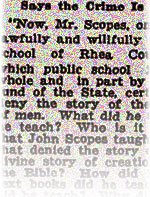Fort St. James. I will comment more later I am sure, but for now here are some pics of the site and of moi. This is of course before the snow which now accompanies us, around late september. It is an interesting manage of culture and history, although the truth behind the years of northern occupation by the trading companies and their upheaval of culture are (were) eerily reminiscent of missionary indoctrination. However, that aside, there are some lessons to be learned here.
 That is me with a pelt. It was one of the largest ones at the fort at this time, much larger than any beaver extant today,. The reason, well any evolutionary biologist, or ecologically literate person can favourably elucidate the fact that killing off the best and the biggest renders a species smaller. It is natural selection, almost, backwards. But that is what humans do, the prone desire of humanity to kill the best, as a reflection of their claimed ownership of Earth, and to prove their strength. However, there is a third dimension here, that the larger furs returned greater sums and thus made better clothing (hats, actually). So, although the contemporary vision of hunting maintains this emphasis on larger individuals of a species, healthy individuals, most magnificient of said species, there results the emaciation of that species in general as the genetic 'pool' is distilled down to simpler and more humbled individuals. It is simply human culture, and human history that I have digressed from here. So, I return. This is me with a pelt that you will no longer see a true living beaver wear because it is now "oversized" - the fur, that is. But beavers survive, and survive well. So all is not lost.
That is me with a pelt. It was one of the largest ones at the fort at this time, much larger than any beaver extant today,. The reason, well any evolutionary biologist, or ecologically literate person can favourably elucidate the fact that killing off the best and the biggest renders a species smaller. It is natural selection, almost, backwards. But that is what humans do, the prone desire of humanity to kill the best, as a reflection of their claimed ownership of Earth, and to prove their strength. However, there is a third dimension here, that the larger furs returned greater sums and thus made better clothing (hats, actually). So, although the contemporary vision of hunting maintains this emphasis on larger individuals of a species, healthy individuals, most magnificient of said species, there results the emaciation of that species in general as the genetic 'pool' is distilled down to simpler and more humbled individuals. It is simply human culture, and human history that I have digressed from here. So, I return. This is me with a pelt that you will no longer see a true living beaver wear because it is now "oversized" - the fur, that is. But beavers survive, and survive well. So all is not lost. Inside of the trading section of the Fort; this is where all of the men would come and gather, trading pelts for ammunitions and supplies. Most of the materials were authentic, from the pemican to the bullets, the cast iron pans to the used bear traps. Quite a refreshing insight to see and witness true speimens of history, when so often history is rendered down to non-authentic replications of items. It was a step back, to quote a famous thought.
Inside of the trading section of the Fort; this is where all of the men would come and gather, trading pelts for ammunitions and supplies. Most of the materials were authentic, from the pemican to the bullets, the cast iron pans to the used bear traps. Quite a refreshing insight to see and witness true speimens of history, when so often history is rendered down to non-authentic replications of items. It was a step back, to quote a famous thought. The Fort, or at least the better portion of it. In the background was the food cache, where they would smoke and store slmon for the winter months. In the foreground was the building where they would keep inventory of tea and supplies, and store furs, etc, to be traded. In the extreme foreground is an early dugout canoe. Impecable in its craftmanship, it impresses upon you the actual need for 'craft' and utility rather than futility of today.
The Fort, or at least the better portion of it. In the background was the food cache, where they would smoke and store slmon for the winter months. In the foreground was the building where they would keep inventory of tea and supplies, and store furs, etc, to be traded. In the extreme foreground is an early dugout canoe. Impecable in its craftmanship, it impresses upon you the actual need for 'craft' and utility rather than futility of today. Tea. From Taiwan, to San Fran, to Northern B.C.
Tea. From Taiwan, to San Fran, to Northern B.C.
Me outside of the Fort area. Again, in the background (counterclockwise) the tea and supply storage, the food cache (there was still myriad salmon fillets smoked and hanging in the upper room), gentlemans quarters for sleeping and resting, and the last one I am not sure. I think it is actually the corner of the trade store, where I am holding the pelt (see above).





No comments:
Post a Comment